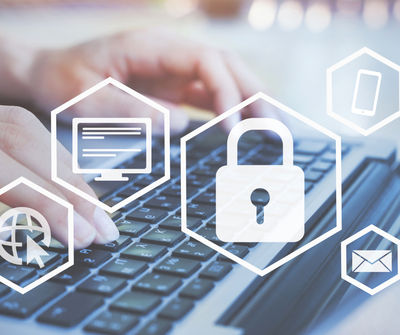Cybersecurity: Take Steps to Protect Yourself

Cybersecurity awareness becomes increasingly important each year as technology continuously becomes more advanced and accessible.
Cybersecurity is just as important for personal mobile devices as it is for big businesses.
- Worldwide spending on cybersecurity is going to reach $133.7 billion in 2022.
- Data breaches exposed 4.1 billion records in the first half of 2019.
- 52% of breaches featured hacking, 28% involved malware and 32% to 33% included phishing or social engineering.
- 92% of malware is delivered by email.
- Security breaches have increased by 11% since 2018 and 67% since 2014.
- Hackers attack every 39 seconds, or on average 2,244 times a day.
Stay Safe Online
- Use strong passwords. Use passwords that can not be guessed easily. Many websites will have password requirements and will have a password indicator that says if the password is too weak. Along with using strong passwords, don’t use the same password for multiple online accounts.
- Do not open email attachments from unknown senders. Along with email attachments, do not clink on links in emails from unknown senders or unfamiliar websites. Most malware is delivered by email.
- Update your software and operating systems. Keeping up-to-date software means you also are keeping your protection up to date.
- Watch what you share. Sharing personal information online has become so easy. Be mindful of what you are sharing and be sure to update your privacy settings.
- Mobile safety. Just as people can be hacked through emails, they can be hacked through text messages as well. Do not click on links in texts from numbers you do not know. Also, avoid using unsecure Wi-Fi networks in public places.
Candace Kornelsen, Graduate Assistant
North Dakota State University
Carrie Johnson, Ph.D., AFC®
NDSU Extension Specialist and Associate Professor / Human Development and Family Science